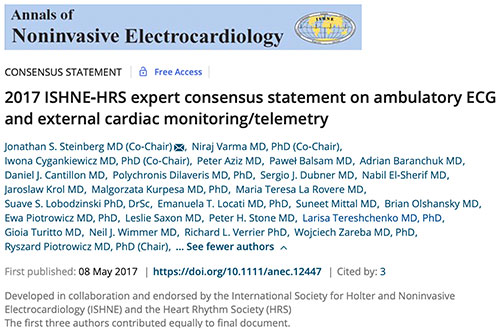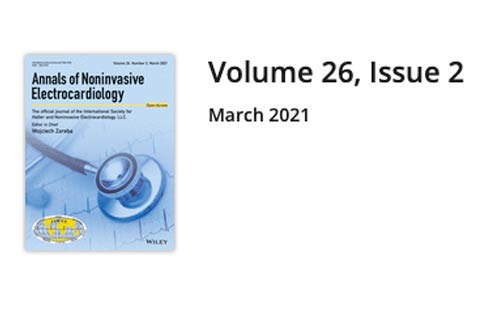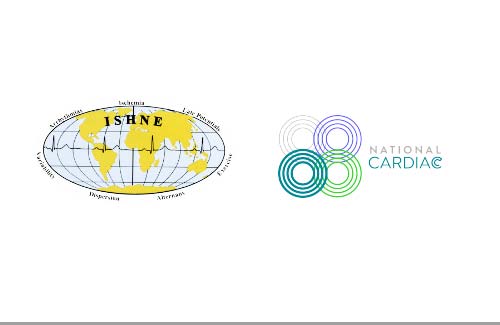This EGG belongs to an elderly Caucasian 84 y.o. woman with a history of IM a long time ago. We pay 1.000.000 American dollars to the colleague to make the correct diagnosis.
Description:
This EGG belongs to an elderly Caucasian 84 y.o. woman with a history of IM a long time ago. We pay 1.000.000 American dollars to the colleague to make the correct diagnosis.
We need meticulous explanations please!!!!!
 Authors: Andrés Ricardo Pérez-Riera, Raimundo Barbosa–Barros & Frank Yanowitz
Authors: Andrés Ricardo Pérez-Riera, Raimundo Barbosa–Barros & Frank Yanowitz
Comments:
By: Mario Blitzman
Sinus rhythm/sinus arrhythmia with left axis deviation and 1st degree A-V block. LAFB, RVH, Old inferior MI. Non-specific ST-T abnormalities in lateral leads.
By: Rafael Morales
Sinus rhytm 72 ´, periods of sinus arrhythmia, first grade AV block, LAFB; RBBHH, inactivable electrical zone (Inferior), subendocardial isquemia.
By: Leandro Rasse
Sinus rhytm, 73 ´, first grade AV block, old inferior -posterior MI, masquerading bundle branch block.
By: Gerardo Moreno
ECG: RS/75 '/ 0.24'' / 0.08'' / 0.40'' / 0.36'' / +0.04 / -50 º TRAZO QRS SINUS RHYTHM, AV BLOCK 1, ZEI LOWER crecimeinto VENTRICULAR rIGHT: This patient has a lower electrical area DII DIII and AVF as a result of old MI, possibly posing av conduction delay, the patient had right ventricular extencion what caused the passage of time by right cavities failure hemodynamic alterations right cavity with consequent expansion and axis deviations palno front right R waves resulting from v1 to v3.
By: Dimitry Bogelman
Dear colleagues,
Thank you for sharing of this very interesting ECG. It is definitely the one that is eye-catching and provoking a lot of interesting questions. I am sorry I am not providing the regular ECG description to save time. I would rather try to discuss the pathological features were found on this recording. There are definitely 1 degree AV block, LAFB, LVH, Old Inferior(?) Myocardial Infarction and relatively rare finding - so called Prominent Anterior Force. All voltage signs are present. (Rv1 > 5, R/S in V1,2 >2, R in V2 >15, Rv3>Rv2>Rv1, Rv5>Rv6 When we are speaking about Prominent Anterior Force there is a list of diagnoses that includes:
- Normal variant with counter clock wise rotation of the heart around the longitudinal axis,
- Right ventricular enlargement , or some variants of RBBB,
- Lateral infarction (new nomenclature of former true posterior infarction)
- Hypertrophic cardiomyopathy (obstructive and non-obstructive forms),
- Ventricular pre-excitation variant of Wolff-Parkinson-White syndrome,
- Left ventricular septal hypertrophy,
- Duchene’s cardiomyopathy,
- Dextroposition,
- Combination of the conditions above.
- Left Septal Fascicular Block (LSFB)
Some of the causes could be easily excluded in this 84 y.o. patient. It is undeniably not normal variant, dextroposition, Duchene’s CMP or WPW. There others need to be evaluated with additional tests. I belive the combination of Vectorcardiography (unfortunately completely abandoned in many European Clinics and in USA), Echocardiography and/or Cardiac MRI/CT (because Echo is not very sensitive for RV hypertrophy as it is for LV Hypertrophy and septal hypertrophy) - would be very helpful. My bet is that in this case we will leave with LSFB, LVH (probably without LV obstruction). If the signs of LSFB appeared in the course of Myocardial infarction it should be Anterior or Antero-Septal MI because Septal Fibers are supplied exclusively by septal perforator branch of LAD and if LSFB is transient phenomenon during ischemic episode - it is highly suspicious for the Proximal LAD disease before S1 branch. When we are thinking about RBBB we can conclude there are no signs of typical RBBB on this ECG but in case of LAFB + LSFB without some degree of RBBB one should expect disappearance of “septal” q-waves in I, V5, 6 and appearance of initial q waves in V1, 2 as a representation of changed direction of septal activation from left -to -right to right -to- left. Actually it is not happening in the case under discussion. It is hard to see on the computer’s display but my impression is that there are some very small q -waves in (I), V5, 6 and for sure no q-waves in V1, 2. My speculation is that in case of LAFB+LSFB with significant degree of RBBB the first initial vector actually not the vector of septal activation but the depolarization of myocard in distribution of left-posterior fascicle of left bundle and in that case we can see highly abnormal sequence of ventricular depolarization and “true “septal depolarization comes later and is “buried” in the QRS complex. The ST-T changes on this ECG among other possibilities could be at least partially explained by severely abnormal propagation of ventricular repolarization as a consequence of abnormal depolarization. So to my view there is some (probably significant) degree of RBBB in this case not obviously seen on the surface ECG (kind of “masquerading RBBB” that is not very unusual in the presence of LAHB, LVH, Old MI). Additional sign is widening QRS more than 120 msec that could be due to concomitant RBBB, It is not more than 110 msec in pure LSFB and pure LAHB. So we can conclude that the patient is probably having significant disease in Ventricular Conduction system and if one would decide to record intracardiac hissogram (at least on indication of 1st degree AV block and wide QRS) it is a good chance that infra-Hissian block will be discovered (H-V interval prolongation) and pacemaker implantation would come into consideration. I am sorry for the long description but this extraordinary ECG proves again that the obvious is not always true:” Masquerading” RBBB, “Masquerading” Anterior or Antero- Septal MI. It is well known fact that the “masquerading RBBB” carries a poor prognosis, since it always implies the presence of a severe underlying heart disease. In my current financial condition I cannot promise paying 1000000 $ but I am eagerly waiting for your interpretation and additional tests’ information regarding this clinical case. Thanks again, Dr. D. Bogelman.
Further Discussion and Final Comments by dr Andres Perez - Riera
Download »file






